Breathing new life into Charles Hapgood’s theory of earth crustal displacement/pole shifts, a new paper proposes that short-term reversals of the geomagnetic field may “unlock” the crust sufficiently to allow tidal forces to pull it over the mantle in the same way they move earth’s oceans. With existing climate theories unable to provide a satisfactory explanation of glacial cycles and ice ages, a revised version of Hapgood’s theory has been developed that explains sea-level changes resulting from the buildup and melting of polar ice over ice age/glacial cycles by a combination of Milanković cycles and Hapgood pole shifts.
Watch a video presentation sponsored by the Society for Scientific Exploration.
Introduction
In this article, we begin by revisiting Hapgood’s theory of earth crustal displacement in the context of recent developments in climate and geoscience and show that it may be the missing link in understanding not only the rise and fall of past civilizations, as we first set out to do in Before Atlantis, but ice age/glacial cycles as well. A modified version of Hapgood’s theory is then described based on a new mechanism that is triggered by short-term reversals of the geomagnetic field that “unlock” the crust from the mantle and driven by earth-moon-sun tidal forces, the same forces that move earth’s oceans.
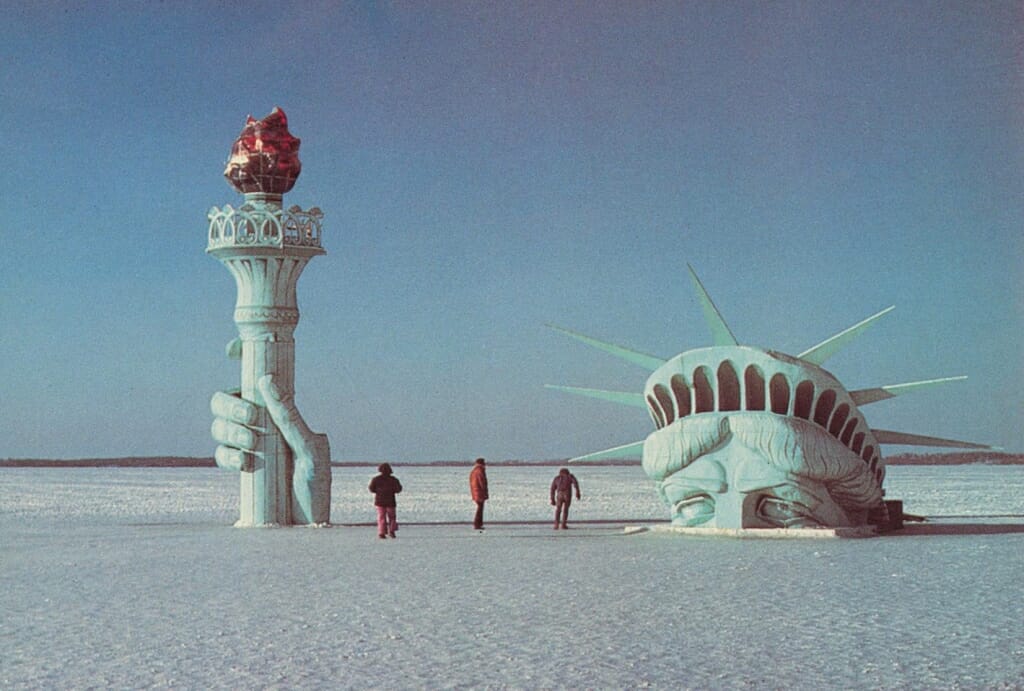
Milanković Cycles
In the 1920s, Milutin Milanković proposed that changes in earth’s eccentricity, axial tilt (obliquity), and precession result in cyclical variations in the amount of incident solar radiation (insolation) reaching the earth. Insolation is generally assumed to be a major driver of climate change over long periods. From 1–3 million years ago, climate patterns were correlated with the earth’s 41 Ky-long obliquity cycle. Then, about a million years ago, patterns began to follow a 100 Ky cycle that is between the 95 Ky and 125 Ky cycles in earth’s orbital eccentricity. Why the period of climate patterns changed, the origin of the 100 Ky cycle, and why insolation lags rather than leads climate changes are among some of the problems that cannot be explained by Milanković cycles. Perhaps the greatest shortfall of Milanković’s theory is the inability of insolation in itself to accurately account for the periodic buildup and melting of polar ice over glacial cycles.
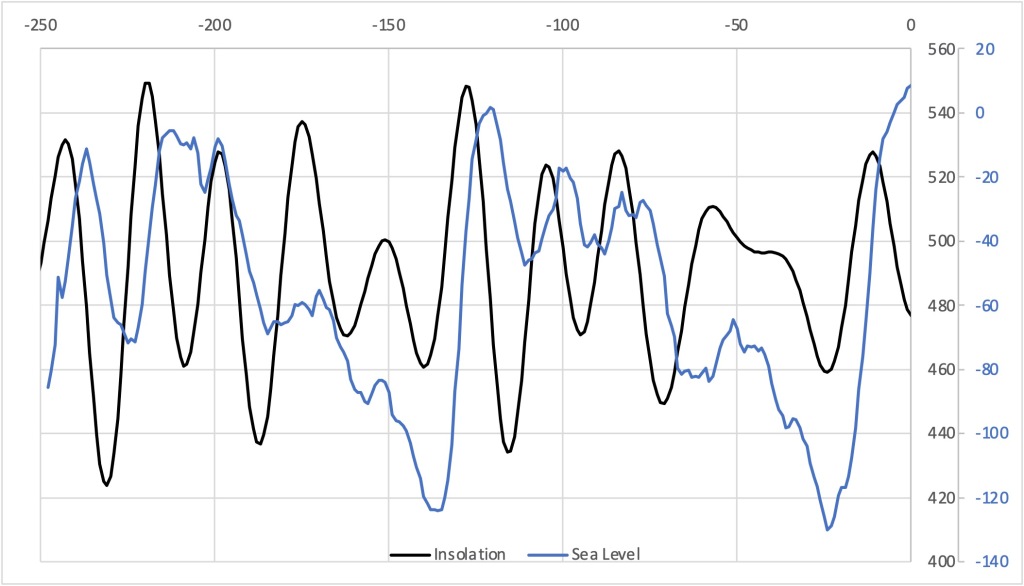
The two time series, insolation and global sea level, shown above are weakly correlated (R=0.14). There is a somewhat higher (R=0.33) correlation between insolation and temperature, and an even greater correlation (R=0.63) between insolation and changes in sea level as a function of time. The reason for the increased correlation is that as insolation increases, temperatures increase, polar ice melts, and sea levels rise. Conversely, as insolation decreases, temperatures decrease, precipitation freezes and accumulates at the poles, and sea levels fall. Exploiting this correlation, we can estimate mean sea level change ∆s(t) as a function of insolation Q(t) that when summed provide an estimate of sea level s(t) as a function of insolation over time.
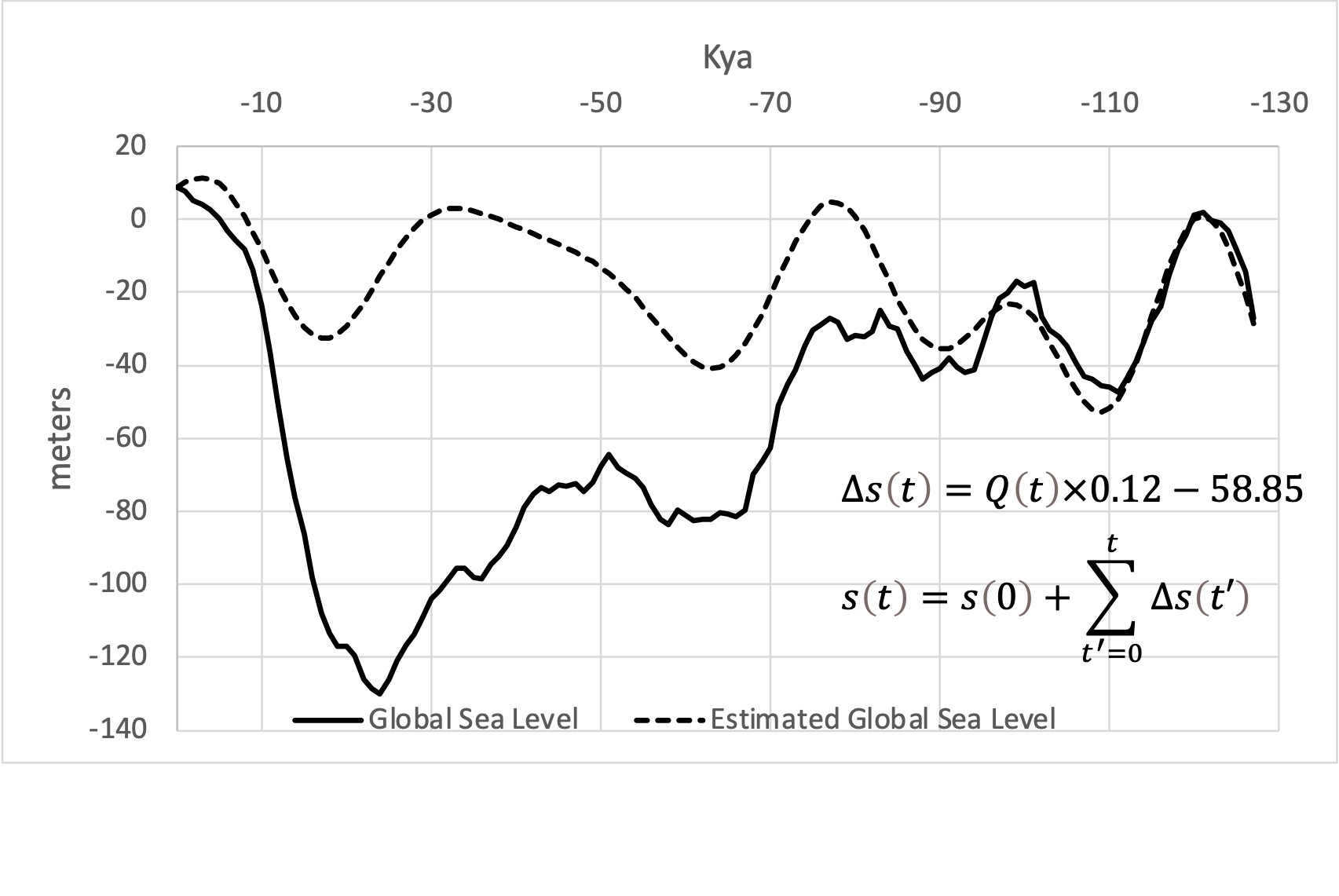
What Insolation Does Not Predict
Over the last two glacial cycles, insolation tends to underpredict sea level (over predict polar ice) at the beginning of a cycle and over predict sea level (under predict polar ice) at the end. In other words, a greater amount of ice melts at the beginning and accumulates at the end of a glacial cycle than what is predicted by insolation.
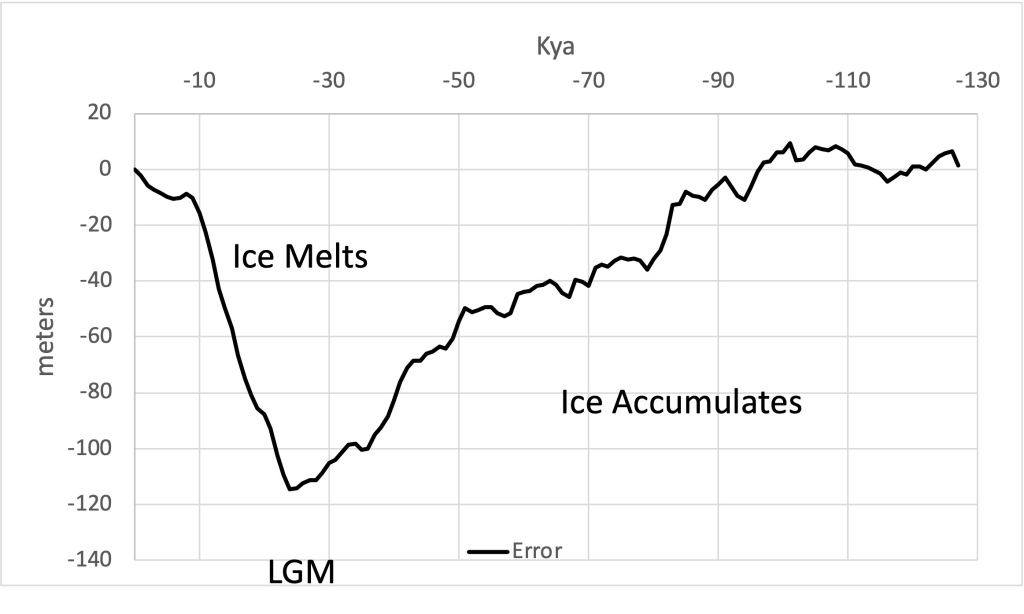
Pole Shifts and Sea Level Changes
Insolation increases as we move toward the equator. Allowing the geographic location of the earth’s poles to shift relative to the rotational axis as Hapgood proposed provides a means that can potentially account for the difference between the above sea-level curves. Before the start of a glacial cycle, a large amount of water is stored in an ice sheet around the pole. If the crust displaces enough to move the ice sheet out of the polar zone, the increased amount of solar radiation at lower latitudes will cause the ice to melt raising sea levels. After a period, an ice sheet begins to form at the new pole causing sea levels once again to fall.
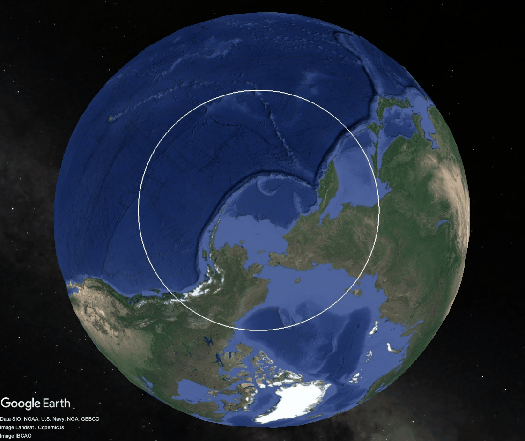
Sea levels decrease in stages during a glacial cycle suggesting a continued buildup of ice near the poles. Notice the land area around the pole is different at different pole locations. Since ice forms and accumulates more readily on land than over the ocean, if the land area at the new pole is greater than the land area at the old pole, sea levels after a pole shift should eventually fall to a lower level as there is a greater area for ice to accumulate. Based on measurements of land area in the Arctic circle and former polar regions there is a strong correlation between the size of the ice sheet (assumed to be determined by land area) and sea level for the current and four prior pole locations. Successive increases in available land area following the Bering Sea to Greenland pole shift have led to successive decreases in sea level. This suggests that the magnitude of crustal displacements during a glacial cycle, i.e., before the last glacial maximum (LGM) and penultimate glacial maximum (PGM) were small enough to keep the accumulating mass of ice in the polar zone. The precipitous rise in sea level after the LGM and PGM suggests that larger magnitude crustal displacements shifted the ice sheet farther south to melt a significant fraction of the accumulated ice.
A Possible Mechanism for Crustal Displacements
In his original theory, Hapgood proposed polar ice creates mass imbalances that can cause the crust to slip over the mantle shifting the geographic location of the North Pole. Einstein later argued that the force of the ice was not sufficient to cause a crustal displacement. Using models of the crust and ice sheets at the LGM to estimate the degree to which the ice could have affected the earth’s moments of inertia, it has been determined that if the crust were free to move, the ice would have shifted the pole by less than 0.25° relative to its present position.
If the first part of Hapgood’s theory is wrong, that ice cannot move the pole, is there another way to save the rest of his theory?
An analysis of alternative mass distribution models reveals the theoretical axis of rotation (TRA) of the crust deviates significantly from the earth’s rotational axis and so may not be in equilibrium with the earth. We have determined the crust’s TRA is at 1.21°N, 18.52° W. This location lies in the zone of the tropics almost on the equator. At the equinox, the equator is parallel with the ecliptic plane. At other times of the year, the ecliptic passes through the earth’s equatorial region between the tropics of Cancer and Capricorn. The path of the sun, moon and most other bodies in the solar system lies along the ecliptic. That the crust’s TRA points in this direction suggest the possibility the crustal disequilibrium may have an external (i.e., extraterrestrial) cause.
The influence of the moon, and to a lesser extent, the sun, are responsible for the earth’s tides. The balance between gravitational and centrifugal forces causes the earth (primarily its oceans) to elongate in the direction of the moon by 1.34 meters and the direction of the sun by 0.61 meters. As the earth rotates, tidal forces cause the oceans to rise and fall twice a day. These forces also pull on the crust. It has been proposed that tidal forces acting on the crust could be a possible trigger for certain kinds of earthquakes.
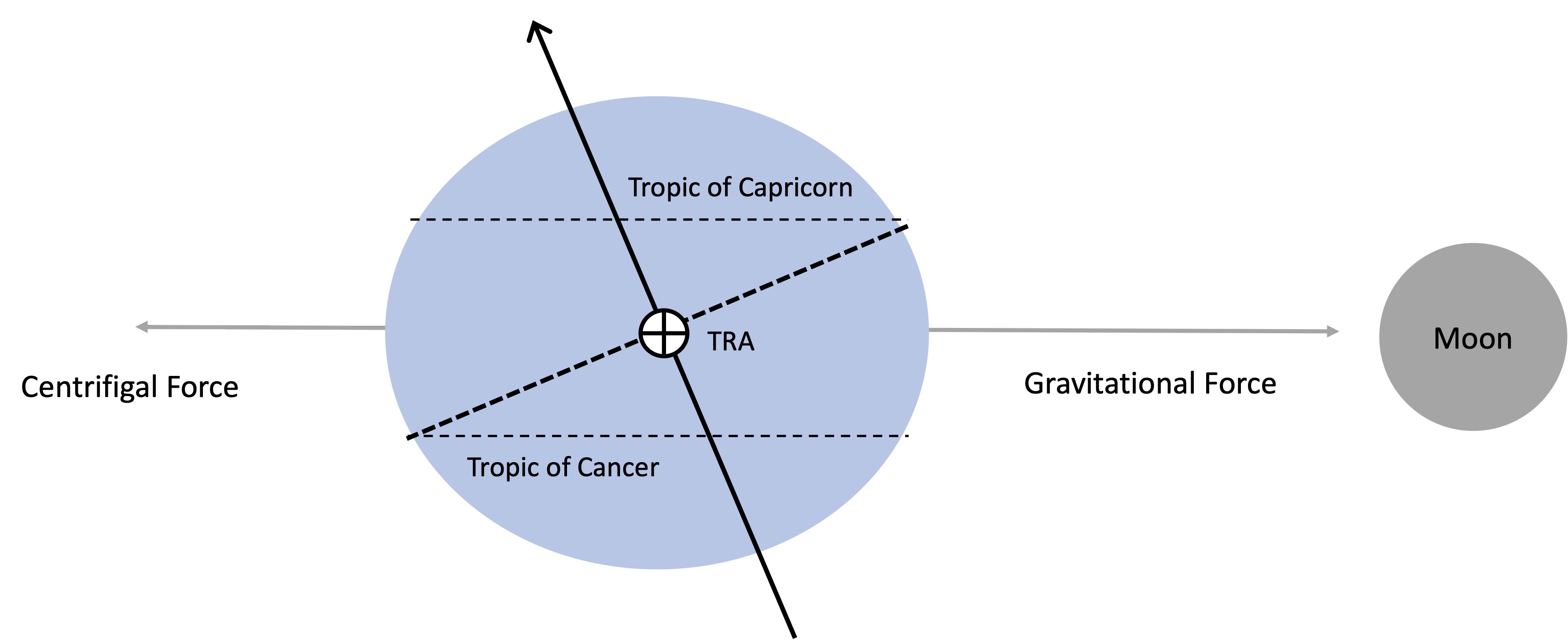
Tidal torques acting on the earth and moon dissipate energy. With the crust “locked” to the mantle, the energy loss manifests as the frictional heating of the crust and oceans. If, however, the crust became “unlocked” the effective work could result in a displacement of the crust over the mantle. The key to crustal displacement thus becomes the question of whether there is a way for the crust to become unlocked from the mantle.
A growing body of evidence suggests changes in the earth’s magnetic field may influence climate. Over the last 83 million years, 183 geomagnetic reversals have taken place in which the poles changed polarity. Geomagnetic reversals occur, on average, 450 Ky years apart. Long periods (millions of years) in which the magnetic poles do not flip preceded the four largest extinctions on earth: the Cretaceous-Tertiary (KT), Triassic-Jurassic (TJ), and the Permo-Triassic (PT) and Guadalupian-Tatarian (GT) doublet. Between geomagnetic reversals, events known as geomagnetic excursions take place where the field temporarily reverses for a shorter period (thousands of years or less).

One possibility is that changes in the magnetic field during a geomagnetic excursion may affect the ease with which the crust can move over the mantle. Magnetic dipoles of ferromagnetic minerals in the crust normally line up in the same direction as those in the core resulting in continental ferromagnetic fields. It is conjectured that when the core magnetic field flips during a geomagnetic excursion, the dipoles in the crust temporarily point in the opposite direction to produce a repulsive force between the crust and core fields. If this force, perpendicular to the crust, is sufficient to reduce the frictional force between the crust and mantle, it may be possible for forces acting on the crust parallel to the surface to move the crust over the mantle while the geomagnetic field is reversed. When the geomagnetic field flips back the crust is once again locked to the mantle maintaining disequilibrium.

Correlated Events
Although there is no way to test our conjecture directly, correlations between geomagnetic excursions, super-volcanic eruptions, and glacial events could imply causation. The Blake geomagnetic excursion occurred 15–20 Ky after the PGM. The Volcanic Explosivity Index (VEI) is a relative measure of the explosiveness of volcanic eruptions. The next two geomagnetic excursions were each followed by massive VEI 8 magnitude volcanic eruptions. The most recent Toba eruption 73–75 Kya followed the Norwegian-Greenland Sea excursion. The Oruanui eruption of New Zealand’s Taupo volcano followed the Lake Mungo excursion 28–30 Kya. The somewhat smaller VEI 7 Phlegraean Fields eruption followed the Laschamp event 40–42 Kya.
Although the trigger mechanism for geomagnetic reversals is not clear, crustal shifts could provide an explanation for earthquake activity, volcanic eruptions, and other events that follow geomagnetic excursions. The Blake, Norwegian-Greenland Sea and Lachamps geomagnetic excursions precede three episodes of sea level decline/increase of polar ice. The Lake Mungo geomagnetic excursion occurs just before the LGM after which global sea levels began to rise to current levels. According to the model, crustal displacement(s) triggered by the Mungo Lake and possibly the Gothenburg geomagnetic excursions shifted most of the ice sheet that had formed up to the LGM almost 2,000 miles south well into the temperate zone leading to rapid melting and sea-level rise. The Younger Dryas event was also likely a significant contributor to glacial melt. All four events appear to be somewhat correlated with Milanković cycles evident in the insolation curve. Three precede major volcanic eruptions.
Conclusion
We show how Hapgood pole shifts working in conjunction with Milanković cycles provide a possible explanation for climate changes over past glacial cycles. That the crust does not appear to be in equilibrium with the whole earth in terms of their moments of inertia suggests the possibility that an unknown force could be at work. We propose earth-moon-sun tidal forces may be responsible, and that these forces, which move the earth’s oceans might provide sufficient energy to displace the crust a significant distance during a geomagnetic excursion. It is our hope that these new findings will lead to further work in these and other related areas of research.


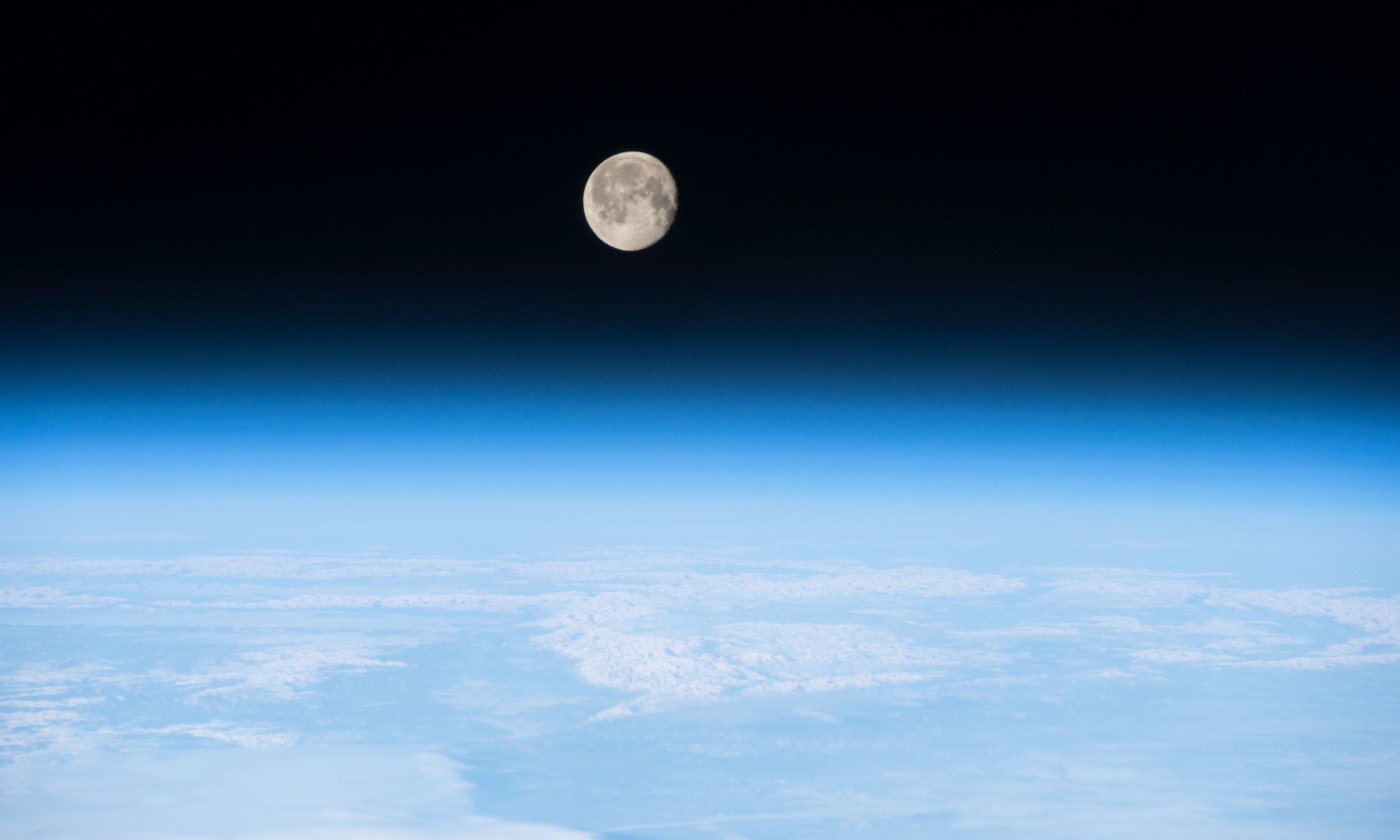

This appears to have weight in this thought!
Eruptions, which were followed after the reversals.
And one more extra push or pull from the sun and over she goes.
LikeLike
My landlady just wasted so much of my time explaining this junk to me. Y’all should get off the internet if you can’t be more discerning about information.
LikeLike